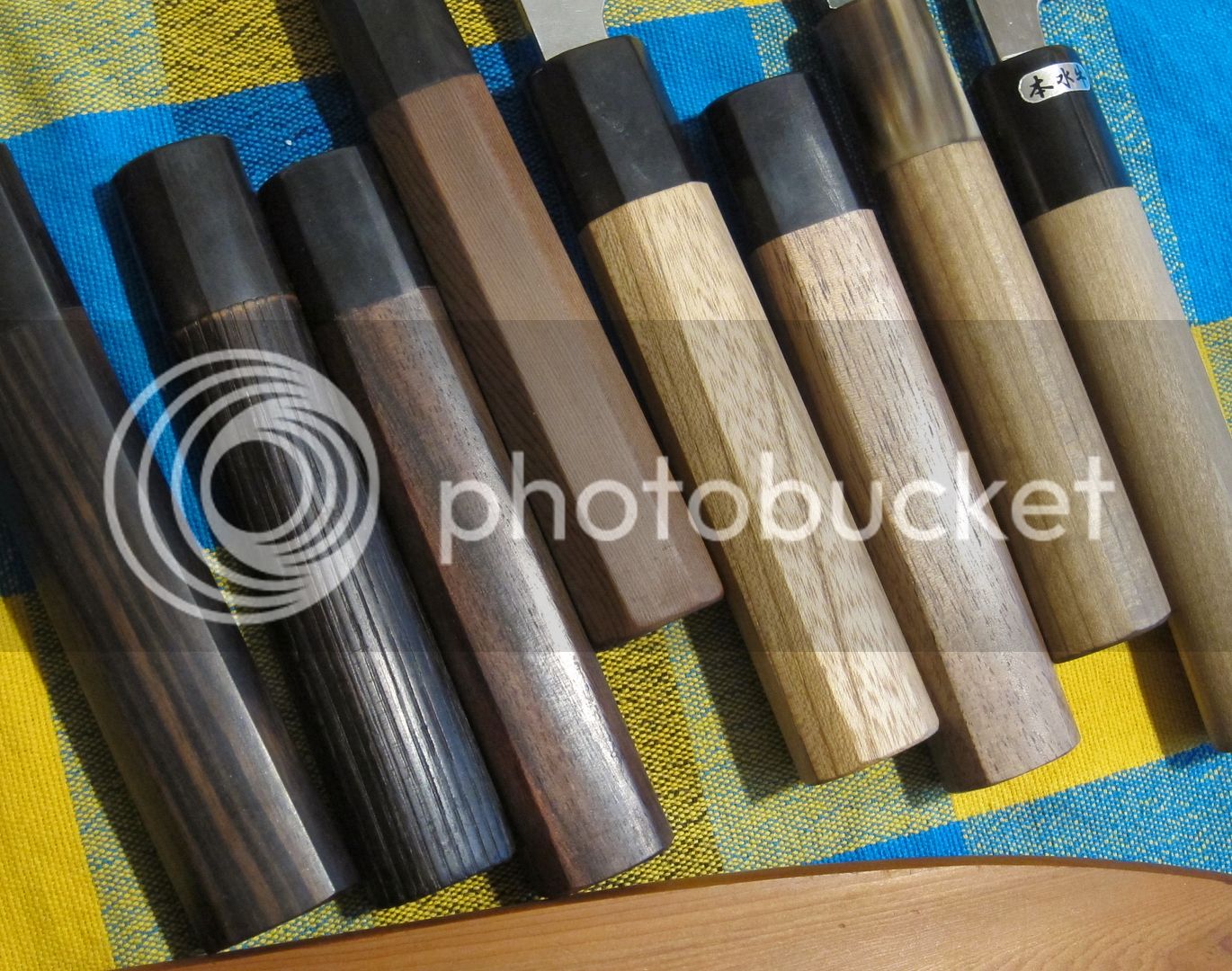... Here you go. Just to add to the above, I went and took a photo. Various handles/woods I've got in/through Japan. All of them here but one (sakura wood):

L-R are: Makassar ebony (Indonesian I presume; couldn't be grown in Japan), burnt chestnut, shitan (rosewood), ichii (yew), keyaki ('Japanese elm'), Japanese walnut, ho handle, ho handle again, and a second example of ichii (yew) with the saya below
Of course it doesn't look the same in real life. The far-right ho handle is duller looking, but really grippy and great for wetness and the 2nd ho handle from right, is shinier and pattered and nicer in looks and smoothness than the 'avg ho'; the keyaki's colour is also slightly subdued in the photo

L-R are: Makassar ebony (Indonesian I presume; couldn't be grown in Japan), burnt chestnut, shitan (rosewood), ichii (yew), keyaki ('Japanese elm'), Japanese walnut, ho handle, ho handle again, and a second example of ichii (yew) with the saya below
Of course it doesn't look the same in real life. The far-right ho handle is duller looking, but really grippy and great for wetness and the 2nd ho handle from right, is shinier and pattered and nicer in looks and smoothness than the 'avg ho'; the keyaki's colour is also slightly subdued in the photo




